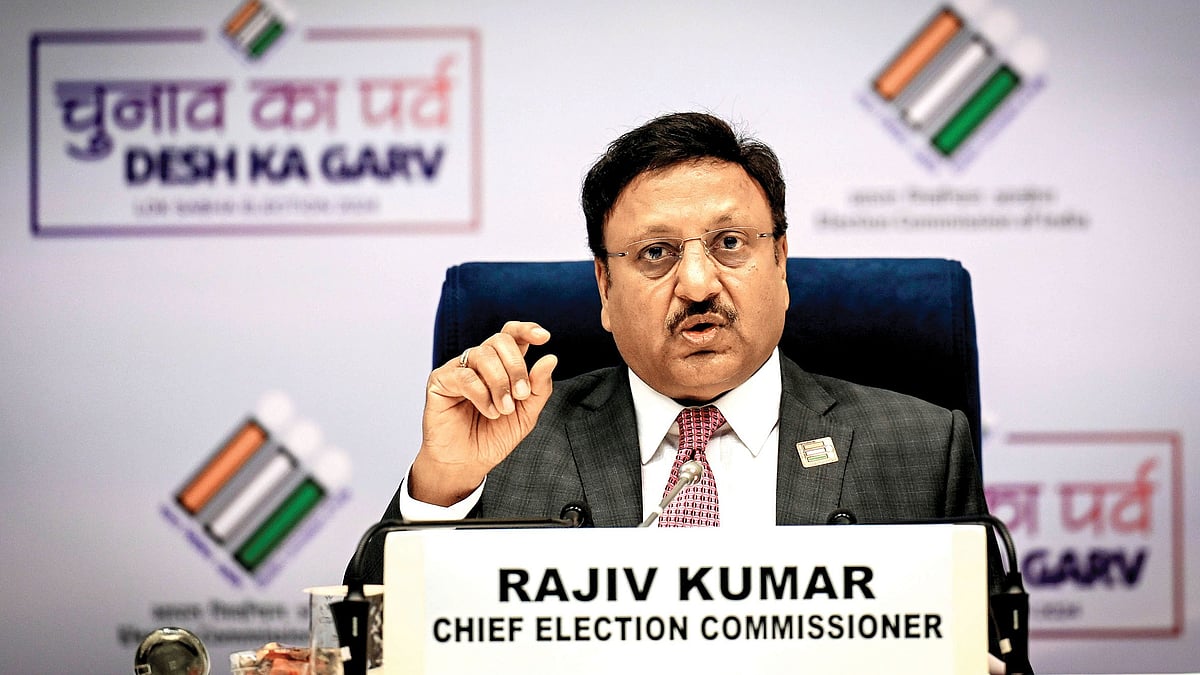Opinion
The outgoing CEC owes us some answers
Even if we set aside for the moment all the concern about EVMs, Rajiv Kumar must address two other serious questions that have popped up repeatedly over the past few months

Chief election commissioner Rajiv Kumar’s term ends in February. At press conferences, he’s been known to wax lyrical; he seems to have a knack for wordplay. But before he steps down, should we hope that he will give some straight answers to the serious questions raised about the Election Commission’s credibility during his tenure?
Even if we set aside for the moment all the concern about electronic voting machines (EVMs), Kumar must address two serious questions that have popped up repeatedly over the past few months. Those who’ve raised these questions have not merely voiced suspicion but backed their questions with hard evidence.
The voter list fiasco
The first issue revolves around alleged manipulation in the voter rolls. India has well-articulated rules to ensure that every adult citizen can vote, that no one who is eligible is unfairly excluded. The question is whether these rules were blatantly disregarded on the election commission’s watch, allowing the BJP, in collusion with its state governments, to delete opposition votes in large numbers and add bogus ones. The controversy was most prominent in Maharashtra.
During the April–May 2024 Lok Sabha elections, Maharashtra had 92.9 million voters. By the time of the November assembly elections, the number had inexplicably risen to 97 million. How did voter numbers jump by 4.1 million—roughly 14,400 new voters per assembly constituency—within six months of a comprehensive revision for the Lok Sabha elections?
Based on population growth rates, not more than 700,000 names should have been added in this period. The Congress party has pointed out that this might not even be the final figure since the election commission has yet to disclose how many names were deleted during this time.
Published: undefined
Congress leader Praveen Chakravarty raised another pertinent question: according to government data, Maharashtra’s adult population in 2024 was 95.4 million, whereas the official voter count for the state assembly election was 97 million. Typically, the voter count is slightly less than the adult population, as the ECI is not able to enlist every eligible voter. The question for the ECI is: how can the voter list have 1.6 million more names than the state’s adult population?!
It’s not just Maharashtra
Journalist Sumedha Mittal from Newslaundry investigated two Uttar Pradesh Lok Sabha constituencies, Farrukhabad and Meerut, where the BJP won with slender margins.
Her report shows that the BJP’s margin of victory was smaller than the number of deletions from the electoral rolls in these constituencies just before the elections—and the deletions targeted booths where the BJP had historically performed poorly and where Muslim and Yadav voters dominate.
Conversely, fake votes from non-existent addresses were added in BJP strongholds. All established ECI protocols were bypassed during these additions/deletions, with officials citing ‘pressure from above’.
The same facts came to light in investigations by news website Scroll.in. The AAP has rung alarm bells about voter deletions in Delhi ahead of the assembly elections on 5 February, claiming the BJP is orchestrating the removal of over 10,000 names in a single constituency.
CEC Rajiv Kumar has a constitutional and moral obligation to issue a white paper on every change made in the electoral rolls between the Lok Sabha and assembly elections.
The question of election results
The second issue is even more damning: discrepancies in election results. After the Lok Sabha elections, many questions were raised about inconsistencies in the data.
Published: undefined
Why was there a discrepancy between the voting percentages announced by the election commission on polling day and the final figures? Why were the final numbers delayed, incomplete and inconsistent? The election commission dismissed these concerns, claiming all data is recorded in Form 17C, copies of which are given to political parties.
Yet, when an RTI request was filed to make Form 17C data public, the commission went silent. The Association for Democratic Reforms (ADR), a nonprofit organisation that has been working on electoral reforms for close to three decades, pointed out discrepancies between the total votes recorded in EVMs and the votes counted (excluding postal ballots) in 536 of 543 Lok Sabha constituencies.
In some cases, more votes were counted than were cast! In Odisha, the Biju Janata Dal (BJD) has highlighted another glaring inconsistency. During the Lok Sabha and simultaneous assembly elections in the state, voters cast two votes on separate EVMs at the same polling booth.
Logically, the vote counts should match. But across all 21 parliamentary constituencies in the state, there were discrepancies, with Dhenkanal showing a difference of over 4,000 votes. The BJD presented Form 17C data to substantiate this claim, questioning the inconsistencies in vote counts on polling day and after.
Rather than addressing these issues transparently, the election commission has tried to bury them. Even worse, Rule 93(2) of the Conduct of Election Rules has been amended to restrict public access to election-related documents. Now, the government and the ECI will decide what information to release, leaving citizens in the dark. There’s more than just a whiff of foul play here.
Rajiv Kumar may retire but these questions will linger.
Published: undefined
Follow us on: Facebook, Twitter, Google News, Instagram
Join our official telegram channel (@nationalherald) and stay updated with the latest headlines
Published: undefined